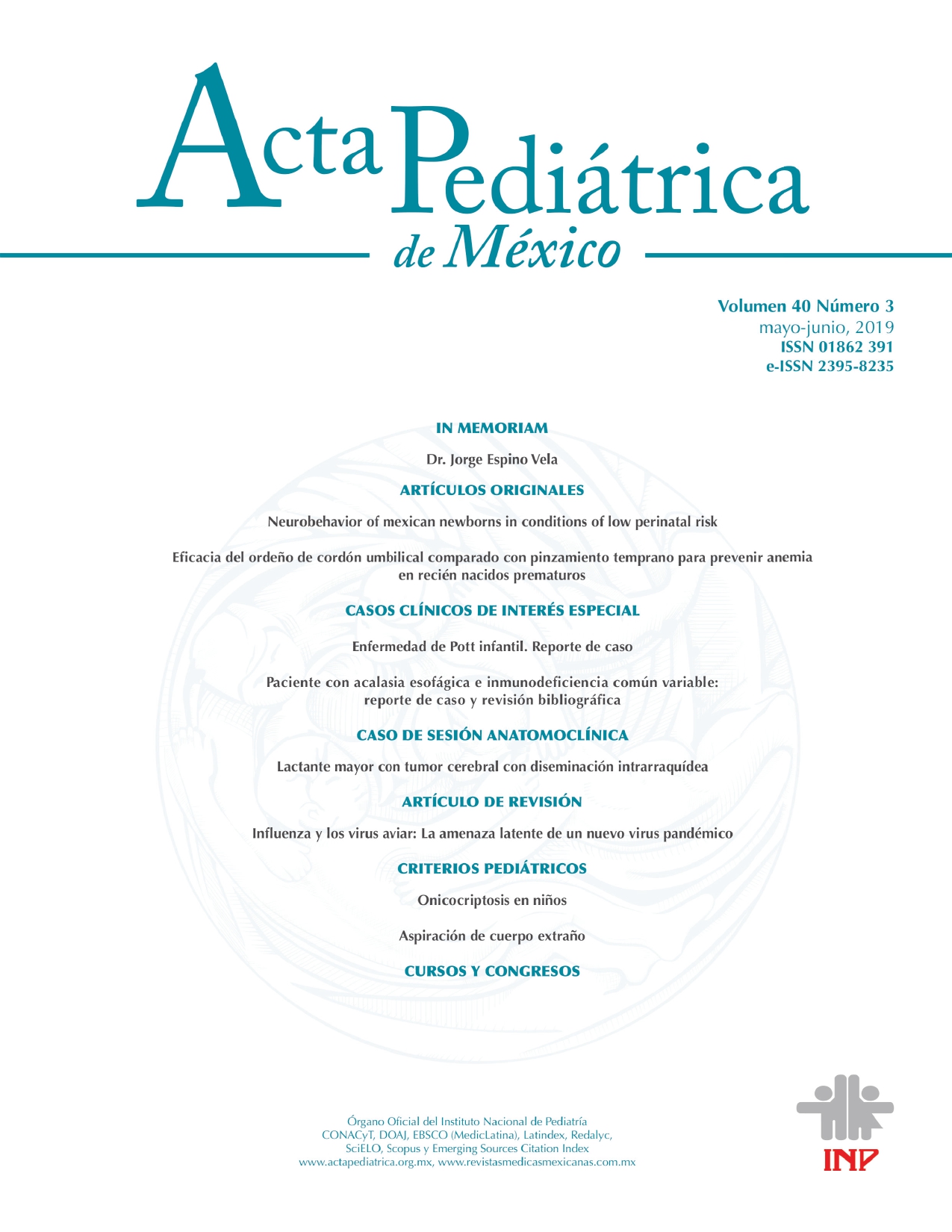Neurobehavior of mexican newborns in conditions of low perinatal risk
Resumen
INTRODUCTION: The first hours of life are still a window of opportunity to identify at-risk newborns, but there are few studies focusing on early neonatal behavior.
OBJECTIVE: Describe in a cross section the behavior of newborns born in conditions of low perinatal risk under 48 hours of extrauterine life and compare it with historical referents.
METHOD: We studied 47 newborns with low perinatal risk, whose behavior was assessed using the Brazelton Neonatal Behavioral Assessment Scale (NBAS). Scores were obtained by item and area, and then were compared with 7 historical referents.
RESULTS: Low scores were found, both by item and by areas in up to 25% of the population. NBAS scores were related primarily with age of newborn, weight, and height. Significant differences were found in relation to referents for which higher scores were reported in the majority of cases.
CONCLUSIONS: A pattern was found of behavior, in which the same areas or items caused greater or lesser difficulty in achieving higher scores or those which required a certain level of adaptation to the environment, which would lead us to believe that our newborns should attain the scores seen in other populations as they advance in age.



